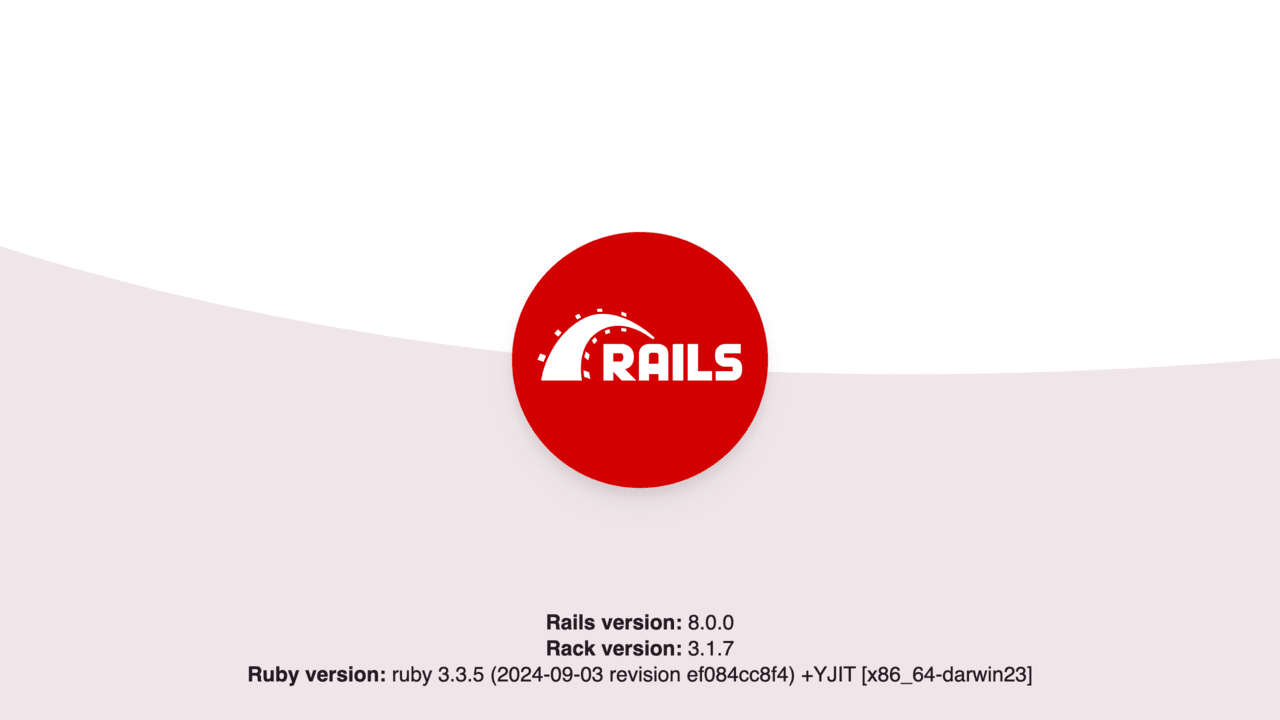For the purpose of this tutorial, we will assume you have Ruby and the Rails gem installed. Please visit the Getting Started with Rails Guide if you do not.
Create a new Rails project
rails new rails_tailwind --skip-coffee --webpack -d postgresql
cd rails_tailwind
rails db:create
This will create a new Rails project for you with webpack and Postgres configured for you and create our databases. We will not use coffeescript, which is why we add the --skip-coffee flag. You can also omit the -d postgresql flag if you like, but if you want to deploy to something like Heroku, I would recommend adding it. If you keep the Postgres flag, make sure you have Postgres installed and it is running. You can install Postgres on macOS by running brew install postgresql && brew services start postgresql
Running Rails and Webpack
You need to run the Rails server and webpack-dev-server in two terminal tabs/windows unless you use Docker or a gem like Foreman.
For now, we will just create two terminal windows. In one window, run:
rails s
and in the other:
./bin/webpack-dev-server
You should see rails welcome page if you navigate to localhost:3000 in your browser.

Generate a Home controller
In order to see the Tailwind styles that we will integrate later, we at minimum need a controller and view.
rails generate controller Home index
You can remove the generated JS, SCSS, and helper file, we won’t be needing them.
rm app/helpers/home_helper.rb app/assets/javascripts/home.js app/assets/stylesheets/home.scss
Configure your routes
Change your config/routes.rb file to:
# frozen_string_literal: true
Rails.application.routes.draw do
root 'home#index'
resources :home, only: :index
end
Restart your Rails server, and now you should see the following on localhost:3000

Install Tailwind CSS
Run the following command in your terminal:
yarn add tailwindcss --dev
This should add the Tailwind package to your package.json.
To create a custom config file, you can run:
./node_modules/.bin/tailwind init
This should create a tailwind.config.js file at the root of your project. This file can be used to customize the Tailwind defaults. Read more here
Next, add the following two lines to postcss.config.js
require('tailwindcss'),
require('autoprefixer'),
Your postcss.config.js file should now look like this:
module.exports = {
plugins: [
require('autoprefixer'),
require('postcss-import'),
require('tailwindcss'),
require('postcss-flexbugs-fixes'),
require('postcss-preset-env')({
autoprefixer: {
flexbox: 'no-2009'
},
stage: 3
})
]
}
Configure Tailwind
There are a few ways you can do this but this is my personal preference.
Remove the assets folder:
rm -rf app/assets
Rename the app/javascript directory to app/frontend:
mv app/javascript app/frontend
Tell webpacker to use this new folder by changing the source_path in config/webpacker.yml from: source_path: app/javascript to source_path: app/frontend.
Next, we need to setup our stylesheets:
touch app/frontend/packs/stylesheets.css
Paste the following into our new stylesheets.css file. This is straight from the tailwind docs
@tailwind base;
@tailwind components;
@tailwind utilities;
Add the following line in app/frontend/packs/application.js:
import './stylesheets.css'
The last step is to tell Rails to use our packs. In app/views/layouts/application.html.erb, change:
<%= stylesheet_link_tag 'application', media: 'all', 'data-turbolinks-track': 'reload' %>
<%= javascript_include_tag 'application', 'data-turbolinks-track': 'reload' %>
to:
<%= stylesheet_pack_tag 'stylesheets', 'data-turbolinks-track': 'reload' %>
<%= javascript_pack_tag 'application', 'data-turbolinks-track': 'reload' %>
Restart the Rails server and webpack-dev-server and you should now see the following on localhost:3000

Tailwind should now be working so lets tweak our views to see some Tailwind goodness.
Update views to use TailwindCSS
In app/views/layouts/application.html.erb change:
<body>
<%= yield %>
</body>
to:
<body class="min-h-screen bg-gray-100">
<div class="container mx-auto">
<%= yield %>
</div>
</body>
and in app/views/home/index.html.erb change:
<h1>Home#index</h1>
<p>Find me in app/views/home/index.html.erb</p>
to:
<section class="py-8 text-center">
<h1 class="mb-2 text-5xl">Ruby on Rails + TailwindCSS</h1>
<p class="mb-8 text-xl">❤️ A match made in heaven️️ ❤️</p>
<a href="https://tailwindcss.com" class="px-8 py-4 font-bold text-white bg-teal-500 rounded hover:bg-teal-700" target="_blank">Tailwind Docs</a>
</section>
You should now see the following page when you navigate to localhost:3000

And now you have Tailwind CSS working in your Rails app!
If you are interested in using PurgeCSS to remove unused styles, I recommend checking out GoRails Episode #294
Happy coding!
Thanks for reading! You can discuss this post using one of the links below. Additionally, it would mean a lot if you shared this post with others!
Recent Posts
-
Minimalist Habit Tracker Template for Obsidian
May 12th, 2022 - 2 min read
-
My Twitter Avatar
May 4th, 2022 - 1 min read